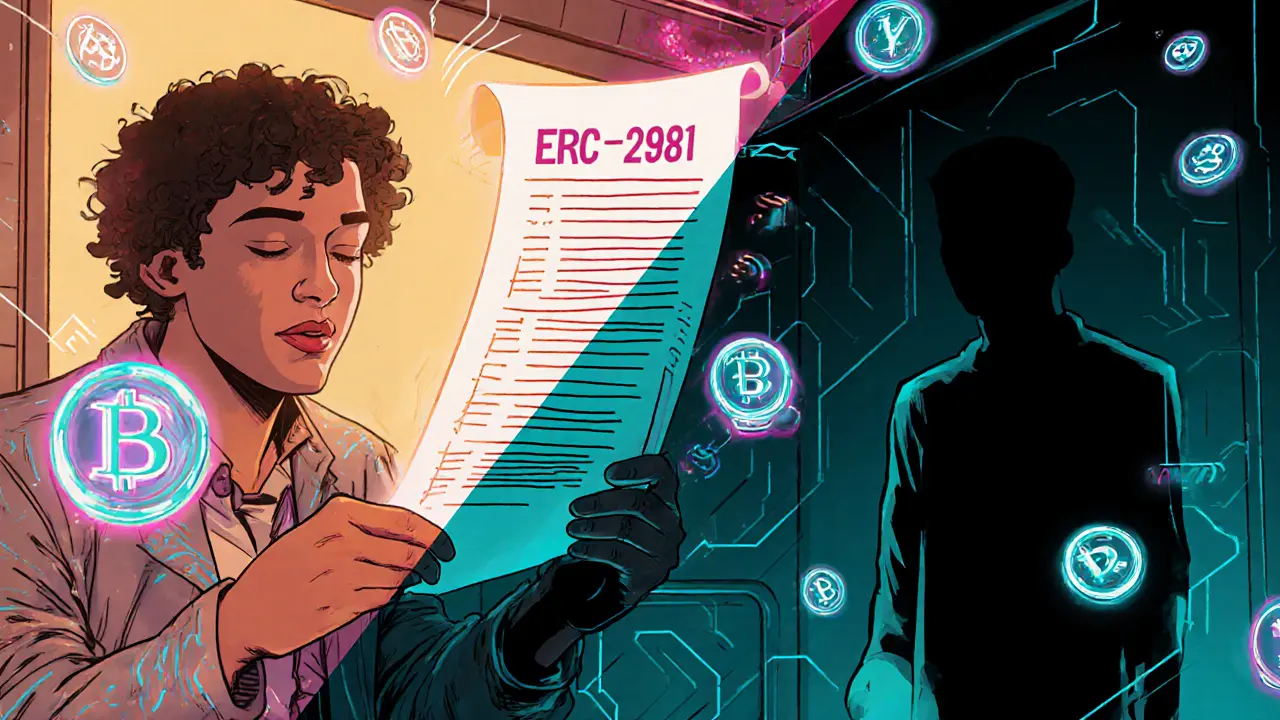Royalty Circumvention in NFTs – What You Need to Know
When dealing with royalty circumvention, the practice of avoiding or reducing royalty payments that are built into NFT smart contracts. Also known as royalty bypass, it often involves tweaking contract code or using alternative platforms. In plain terms, if an artist sets a 10% resale fee, some buyers look for ways to keep that cash. The trend has grown fast because NFTs are now part of everyday trading, and every percent saved matters.
One of the core building blocks behind this behavior is NFT royalties, the automatic payment that the original creator receives each time the token changes hands. These royalties are baked into the token's smart contract on blockchains like Ethereum or Polygon. While they protect creators, they also create a target for those who want to sidestep the fee, especially when the resale market becomes highly liquid.
Behind the scenes, smart contracts, self‑executing code that runs on a blockchain without a middleman dictate how royalties are collected. By altering the contract's call flow, using proxy contracts, or employing wrapper contracts, a buyer can route the transaction through a path that skips the royalty clause. This technical shortcut is what many call royalty circumvention, and it usually requires a decent grasp of Solidity or similar languages.
Key Techniques and Risks
Understanding royalty circumvention helps you protect your earnings. The most common technique involves moving the NFT to a secondary marketplace that doesn’t enforce the royalty rule. Decentralized marketplaces, such as OpenSea’s “private listings” or newer platforms built on the blockchain marketplaces, online venues where NFTs are bought, sold, or swapped without a central authority, can let users execute off‑chain trades that later settle on the chain without triggering the royalty logic.
Another emerging method leans on DeFi platforms, financial services built on blockchain that include lending, borrowing, and token swaps. Traders can lock an NFT as collateral, borrow a stablecoin, then sell the borrowed asset on a different protocol. Because the original NFT never changes hands on the marketplace, the royalty clause stays idle. This approach blurs the line between NFT trading and broader DeFi strategies, showing how cross‑protocol activity can influence royalty outcomes.
These workarounds aren’t without danger. Altering contract code can open the door to reentrancy attacks, a well‑known smart‑contract vulnerability that lets a malicious actor repeatedly call a function before the previous execution finishes. If a wrapper contract isn’t audited, it could expose the buyer’s assets to loss. Moreover, many jurisdictions are starting to treat royalty avoidance as a breach of contract, meaning legal repercussions could follow.
From the creator’s perspective, monitoring royalty payments has become a cat‑and‑mouse game. Tools that track on‑chain royalty flows, like specialized analytics dashboards, can flag abnormal transaction patterns. However, as the ecosystem evolves, new proxy contracts and layer‑2 solutions keep the cat agile. Staying aware of the latest bypass techniques is essential for anyone who relies on royalty income.
In practice, the decision to use or avoid royalty‑bypassing methods often hinges on cost versus benefit. If a token sells for a modest amount, the savings from skipping a 5% royalty might be negligible compared to the gas fees needed for a complex contract swap. Conversely, high‑value art pieces can see thousands of dollars saved, making the effort worthwhile for sophisticated traders. The market’s tolerance for these tactics also shifts with each regulatory update and platform policy change.
Below you’ll find a curated selection of articles that dive deeper into each facet of royalty circumvention – from technical guides on smart‑contract modifications, to legal analyses of emerging regulations, and case studies of platforms that either enforce or ignore royalty rules. Whether you’re an artist safeguarding your income, a trader looking for edge, or just curious about the mechanics, the posts ahead will give you practical insight and real‑world examples.

